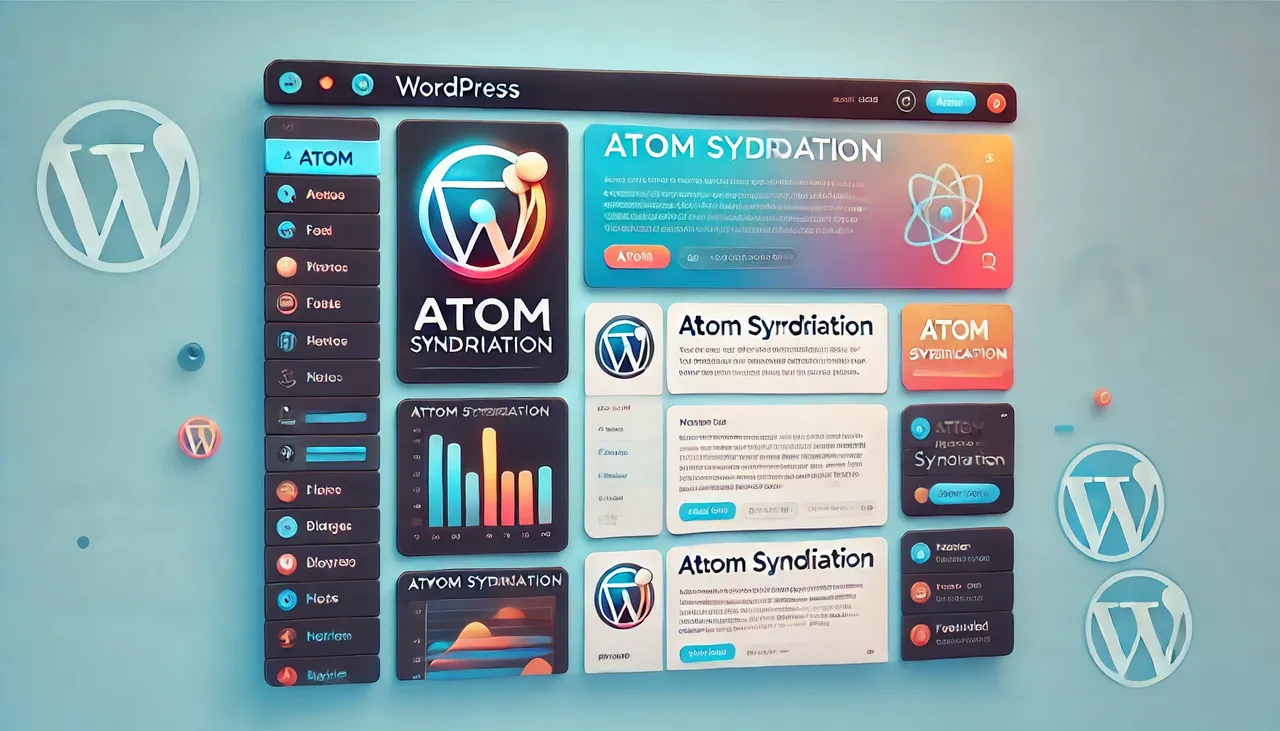Atom

With the increasing popularity of web feeds and the need for efficient content distribution, understanding the Atom Syndication Format and its implementation in WordPress has become essential.
Atom, a widely-used XML-based format, offers improved features compared to its predecessor, RSS.
By automatically generating Atom feeds, WordPress allows users to easily publish and manage their content.
Furthermore, the Atom Publishing Protocol enables remote publishing, modifying, and deleting of posts and media files.
This article explores the fundamentals of Atom Syndication Format, its integration in WordPress (also read: Learn WordPress for Free), and advanced features to enhance content distribution.
Summary & Key Takeaways
Hide
- Atom is a format used to publish content in XML and is used by feed readers and news aggregators.
- WordPress can automatically generate an Atom feed for content, which can be discovered by feed readers and news aggregators.
- Atom was developed to fix flaws in RSS and users can choose between RSS or Atom format for web feeds.
- Atom Publishing Protocol (AtomPub) is a web standard related to Atom that allows remote publishing, modifying, and deleting of posts and media files.
What is Atom in WordPress? The Basics of Atom Syndication Format
The Basics of Atom Syndication Format involve the use of XML to publish content and its utilization by feed readers and news aggregators.
Atom feed structure consists of a hierarchical format that includes elements such as title, link, updated date, and content.
The benefits of atom syndication are manifold. Firstly, it provides a standardized format for publishing and distributing content, ensuring compatibility across different platforms and applications.
Secondly, atom feeds allow users to easily subscribe to and receive updates from multiple sources in a centralized manner, saving time and effort.
Additionally, atom syndication supports the syndication of various types of content, including articles, blog posts, podcasts, and more.
This flexibility enables content creators to reach a wider audience and engage with their readers effectively.
Overall, atom syndication format offers a powerful solution for content distribution and consumption in the digital age.
Implementing Atom Feeds in WordPress
Implementing Atom feeds in a website can provide a standardized format for publishing and distributing content in XML.
The following are four key aspects to consider when implementing Atom feeds in plugins and troubleshooting common issues with Atom feeds in WordPress:
- Plugin compatibility: Ensure that the plugin being used to implement Atom feeds is compatible with the version of WordPress being used. This can help avoid conflicts and ensure smooth functionality.
- Feed validation: Validate the Atom feed using online tools or plugins to ensure that it adheres to the Atom Syndication Format standards. This can help identify and resolve any formatting or structural issues.
- Permalinks configuration: Check the permalinks settings in WordPress to ensure that they are properly configured. Incorrect permalinks settings can cause issues with generating and accessing Atom feeds.
- Cache management: If caching plugins are being used, make sure to configure them properly to avoid caching Atom feeds. Caching can cause outdated or incorrect feeds to be served to users.
Advanced Features and Best Practices for Atom Syndication in WordPress
Optimizing the publishing and distribution of content in XML can be achieved in WordPress by implementing advanced features and following best practices for Atom syndication.
Atom feed customization allows users to tailor their feeds to meet specific needs, enhancing the overall user experience.
By customizing the Atom feed, users can control the content, format, and appearance of the feed to align with their preferences.
This customization option provides a powerful tool for users to optimize their Atom feeds and ensure that the content is delivered in a way that maximizes its impact.
Additionally, optimizing atom feed performance involves implementing best practices such as caching, compression, and minimizing unnecessary data to enhance the speed and efficiency of content delivery.
By following these practices, users can ensure that their Atom feeds are optimized for performance, allowing for seamless and efficient content distribution.
Table: Best Practices for Atom Syndication Optimization
| Best Practices | Description |
|---|---|
| Customization | Tailor the Atom feed to meet specific needs and preferences |
| Caching | Implement caching techniques to improve feed loading speed |
| Compression | Compress the feed data to reduce file size and improve delivery efficiency |
| Minimize unnecessary data | Remove any unnecessary data from the feed to reduce load times and improve performance |
